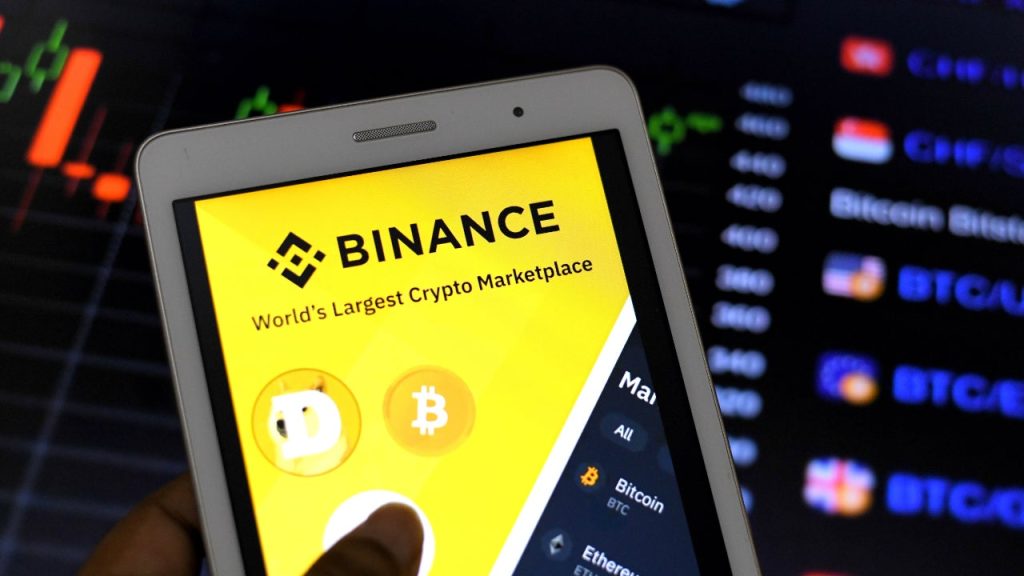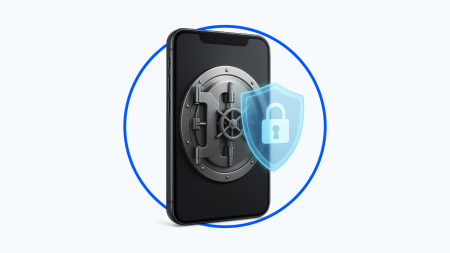Binance.US offers a wide selection of cryptocurrencies and zero-commission trades on some Bitcoin pairs. Binance, which we use here to refer to the U.S. arm of the exchange, charges reasonable commissions that decline as you trade more, ranking it among the cheaper places to trade. Stack on one of the widest selections of tradable coins, too.
All solid features — but customers should be aware of some key shortcomings such as the lack of phone support. The company’s mixed legal past with U.S. regulators should also give customers pause, and potential clients should carefully consider whether the brokerage qualifies for their investment dollars.
If you need an even larger selection of tradable coins, consider Coinbase as a potential exchange. But if you need just a few key cryptocurrencies while also trading traditional securities such as stocks, the finance apps Robinhood and Webull may be solid picks, too.
Binance at a glance
| Category | Binance.US |
|---|---|
| Best for | Crypto-only traders, active traders and crypto-to-crypto trading |
| Minimum balance | None, but as low as $1 to trade, depending on the pair |
| Securities tradable | 180+ cryptocurrencies |
| Cost per trade |
|
| Customer service | AI chatbot, live chat and self-help |
| Mobile app | Yes, available in the Apple App Store and Google Play Store |
Pros: Where Binance stands out
Some commission-free trading and moderate fees
Binance really stands out when it comes to its commission structure, particularly since it allows you to trade select Bitcoin and other Tier 0 pairs without a commission. Otherwise, fees generally start at a medium level, and then only move lower. Binance uses a volume-based pricing model, and even offers further discounts for using its proprietary cryptocurrency to buy and sell. That said, if you’re used to the simple world of most brokerage pricing, you’ll need to bid goodbye to those dreams here.
Binance breaks its fees into two tiers within the volume model. Tier 0 — select pairs that can include Bitcoin — gets commission-free trading. Tier 1 works on a scaled system.
For Tier 1, Binance uses a maker-taker model that rewards those who add liquidity to the market (makers) and charges a bit more (at higher trade volumes) to those who reduce liquidity (takers). So makers and takers can be charged different prices even if they’ve done the same volume. Oh, and add on a further discount of 5 percent if you’re using BNB, Binance’s own coin, to pay for fees. It’s a mishmash of pricing, but let’s break it down.
For Tier 1 trades, Binance’s volume-based pricing scheme spans nine levels, with sliding fees for both makers and takers. Here commissions start as high as 0.60 percent (with less than $10,000 in 30-day trading volume as a taker) and run as low as free, if you’re a maker with $20 million in volume in the 30 prior days.
And again, if you’re using BNB to pay, go ahead and deduct 5 percent from that tab.
There’s one more thing you’ll need to be aware of, however. Binance charges what it calls a spread when you buy, sell or convert your coins on Binance U.S. You can (and should) avoid this fee by using what Binance calls Advanced Trading, which allows you to engage directly in the market.
So how much would it cost you to buy $10,000 of a given cryptocurrency at each tier, assuming you were a taker using Advanced Trading?
- Tier 0: At this tier, you could buy certain pairs with no commissions.
- Tier 1: Here you would pay $60, or $57 with BNB.
The pricing is simplified from a couple years ago, but it’s still complicated (and mostly more expensive) relative to the no-commission stock and ETF trading at brokerages.
Relatively broad cryptocurrency selection
Binance might not offer the largest selection of cryptocurrencies, but it offers much more than the general financial apps such as Robinhood and Webull that have been encroaching into the crypto space. With over 180 cryptocurrencies available on its platform, you’re going to find the most popular names, including Bitcoin, Ethereum, Solana and more. And you’ll find dozens of other altcoins, too, plenty of others that you’re likely not familiar with.
Other rival apps advertise crypto trading but only offer a handful of the most popular coins.
Robinhood offers trading in about 30 cryptocurrencies, while Interactive Brokers — generally the broker with the widest selection of available traditional securities — trades in about a dozen cryptos. Many typical online brokers don’t offer any direct access to cryptocurrency trading.
Specialized crypto exchange Coinbase does offer more than 300 coins on its platform, but this buffet-style offering is only better if you need something not offered on Binance. And it’s worth noting that crypto is the extent of securities offered at Binance. If you want stocks, bonds, funds or something more, you’ll have to turn your sights to a traditional broker or financial app.
Supports crypto-to-crypto trading
Binance allows clients to trade directly from one cryptocurrency to another. So you won’t have to cash out of one coin (or into another stablecoin) and then move into the new currency. Instead, you can swap straight from the coin you’re selling to the coin you actually want. Not only is it just more efficient in terms of making transactions, but it also helps you avoid unnecessary trading fees, too, though Binance is still collecting a spread mark-up on the transaction.
Cross-trading is not available on all cryptocurrency pairs, but Bitcoin (the most popular cryptocurrency) can be swapped directly with many other coins.
Offers staking rewards
Like Coinbase, Binance offers customers the ability to earn staking rewards for holding coins with the firm. Staking is something like earning interest in a bank account but with different and far greater risks. Staking generates income on certain cryptocurrency when it’s used to validate transactions in the currency. Binance charges what it calls a standard service fee for facilitating all the technical aspects of staking. This fee amounts to 9.95 to 39.95 percent of earned staking rewards but may change at any time.
Customers can earn staking rewards on a handful of cryptocurrencies, 22 as of the last count. Rewards accrue daily, but distributions typically only occur weekly.
Cons: Where Binance could improve
Dubious reputation and practices
Binance’s reputation precedes it — and not in the way you want. The Securities and Exchange Commission sued Binance in June 2023, alleging that it had illegally operated as an exchange, broker-dealer and clearing agency and offered and sold unregistered securities. The lawsuit also accused Binance and its founder and CEO, Changpeng Zhao, of misusing customer funds.
That suit resulted in Binance and Zhao pleading guilty to criminal charges in late 2023 through the U.S. Department of Justice. The company paid $4.3 billion in fines and Zhao spent time in prison, paid a fine in the millions and resigned as CEO.
The SEC dropped its civil lawsuit against Binance and Zhao this spring, but clients may want to think carefully about working with a company that has had such issues. This is especially true at an institution that you need to be able to trust with your money.
Not available in some states
Binance (technically Binance.US) is not available in 12 states, including Texas, New York, Georgia and North Carolina. New customers can’t open Binance accounts in Michigan, though existing customers can still trade. Kansas and Wisconsin residents are limited to crypto-only services.
While the company has said that it intends to eventually operate in all 50 states, full coverage may yet be a ways off.
Limited customer support
Maybe Binance’s low fees are a bit too low? That’s because clients can contact customer support only through an AI chat or live chat. And even chat is a serious upgrade in recent years. No phone. You’ll have to explain the issue clearly in writing, when sometimes the issue is anything but clear. Your only other recourse is a self-help section on the website, which may or may not prove useful.
Perhaps someday Binance can upgrade to phone support, too, as some rival exchanges have.
— Bankrate’s Logan Jacoby contributed to an update.
Why we ask for feedback
Your feedback helps us improve our content and services. It takes less than a minute to
complete.
Your responses are anonymous and will only be used for improving our website.
Help us improve our content
Read the full article here









